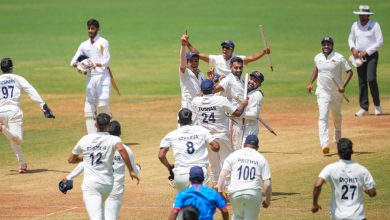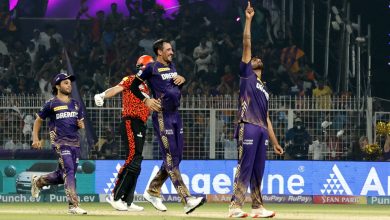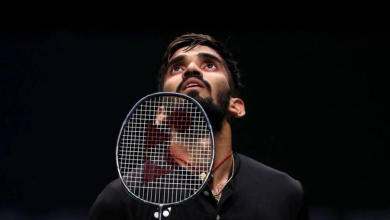When VIP Isn’t Exclusive Enough: Welcome to VVIP

With its haughty aura of exclusivity, the red-carpeted, velvet-roped VIP entrance at Al Bayt Stadium seems designed to inspire maximal awe and envy. As regular fans were herded through their gates at the England-United States game Friday, the VIP guests were welcomed an exotic figure dressed as some sort of antelope, covered head to toe in shimmering golden squares.
(When pressed on its identity, the figure, who was not supposed to speak, muttered under its breath: “Oryx.” But this is the Qatar World Cup, where there is something even better than the VIP entrance: the VVIP entrance.
Not that it is available, or even fully visible, to you. Flanked barriers and cut off from the normal road system, Al Bayt’s VVIP entrance is a sweeping thoroughfare on which the most important fans, starting with Qatar’s emir, who arrives helicopter with his entourage and then hops into a Mercedes, are chauffeured directly into their special enclave in the stadium. That way, they are never required to interact with or even occupy the same general space as, regular fans.
Every sports venue has its tiered system of luxury — the owner’s box, the business lounges, the special-access elevators, the ridiculously expensive seats, the even more ridiculously expensive seats.
But at this year’s World Cup, the convergence of two entities awash in luxury and entitlement — Qatar, where all power and privilege flow from the emir, and FIFA, soccer’s global governing body, with its vast wealth and patronage network — provides a bracing reminder that there is always a more rarefied degree of exclusive.
The main difference between the luxury and non-luxury seats at this year’s World Cup is alcohol. In a shock to fans (and to Budweiser, the official beer of the tournament since 1986), Qatar reversed itself and decreed just before the event began that the sale of alcoholic beer (indeed, alcohol of any kind) would be banned in and around the stadiums.
But that didn’t affect the flow of free beer — or free champagne, Scotch, gin, whiskey, wine and other drinks — available to non-regular fans in the VIP, VVIP and hospitality areas. The rules, it seemed, did not apply to them.
At a $3,000-a-seat hospitality lounge at Al Bayt during the game between the United States and England, for instance, the bar menu included Taittinger Champagne, Chivas Regal 12-year-old whiskey, Martell VSOP brandy and Jose Cuervo 1800 tequila.
“If you want to drink, you can’t drink in the stadiums,” said Keemya Najmi, who was visiting from Los Angeles with her family. “So this is just a lot more comfortable.”
Alcohol is just one of the amenities available inside the World Cup’s most exclusive suites.Credit…Tasneem Alsultan for The New York Times
Also adding to the comfort: a dedicated check-in desk staffed smiling hosts doling out special passes and little gift bags; a coriander-infused welcome drink that was a jolt to the system; tables bedecked with nuts, dates, popcorn and potato chips; an endlessly sumptuous buffet comprising dishes like slow-cooked lamb shoulder and marinated tuna steak, along with a carving station and a selection of six desserts; and a band belting out cross-cultural fan favorites like “Sweet Caroline.”
In all, there are five tiers of “hospitality” in the stadiums, according to Match Hospitality, a FIFA partner that operates those sections, beginning with $950 stadium seats that serve street-style food, along with wine and beer. At the highest end are private suites that cost about $5,000 per person and offer six-course meals prepared a private chef, cocktails served sommeliers and mixologs and the promise of “guest appearances” unnamed celebrities.
The most exclusive suite is the Pearl Lounge, right above the halfway line at Lusail Stadium, which offers each guest an “exceptional commemorative gift.” There is also, according to someone who has been in it, a suite at Al Bayt that, for some reason, boasts a retractable bed and a bathroom equipped with a shower.
At Al Thumama stadium, the most high-profile fans enter on a red carpet. Credit…Tasneem Alsultan for The New York Times
This World Cup has taken in about $800 million in hospitality seat sales — a sports industry record, a Match Hospitality spokesman said. But many of those guests have paid for the privilege, unlike, it seems, the VIPs (or the VVIPs). The taxonomy of VIP-ness has been a matter of some debate among those on the other side of the velvet ropes. There are different theories.
“The VIPs are the sponsors,” declared a woman who, it must be said, works for one of the sponsors herself and was speaking in a hospitality lounge, not a VIP suite. (She is not authorized to talk to the press and asked that her name not be used.)
No, said a Saudi journal in the stands who also asked that his name not be used.
“The VIPs are usually from business and the banking sector,” he said. “The VVIPs are the emir and the people around him — his family, his father — and foreign officials.”
Those would include, presumably, Crown Prince Mohammed bin Salman of Saudi Arabia, who sat near the emir during the opening match, as well as Jared Kushner and Ivanka Trump, who were spotted in a luxury box at the U.S. match.
There’s a consensus that top FIFA officials, like President Gianni Infantino, are VVIPs, but that other FIFA and FIFA-adjacent personnel are merely VIPs. Meanwhile, a Qatari involved in organizing logics for the tournament, who did not want to speak on the record because he is not allowed to, said that sometimes there is a surfeit of VIPs at Qatari events.
In that case, so many people end up getting bumped up to VVIP status that the organizers are forced to create a new tier entirely: VVVIP, the human equivalent of a seven-star hotel.
With all this VIP inflation, is it any wonder that visitors are suffering from status anxiety?
On a recent morning at the luxury Fairmont Doha, a magnet during the tournament for former soccer stars, wealthy businessmen and FIFA grandees, officials were milling around before the first match of the day. A buff security guard was on hand to repel unwanted visitors.
A member of the FIFA Council, the organization’s governing board, paced the lob’s marble floors, a cellphone clamped to her right cheek. She was telling the person on the other end how many (free) tickets she required for each game. Another FIFA functionary was dispensing already acquired tickets to hotel guests.
The time to leave for the stadium drew close, and two women in navy blazers appeared, holding paddles directing guests to follow them — one for “FIFA VIPs,” the other for “FIFA VVIPs.”
A few minutes later, a well-dressed couple received their tickets. The woman peeked inside. The news was bad.
“Only VIP,” she murmured.
In the driveway, the VVIPs were directed to a fleet of black SUVs that would ferry them to the match. The VIPs had to take a bus.







